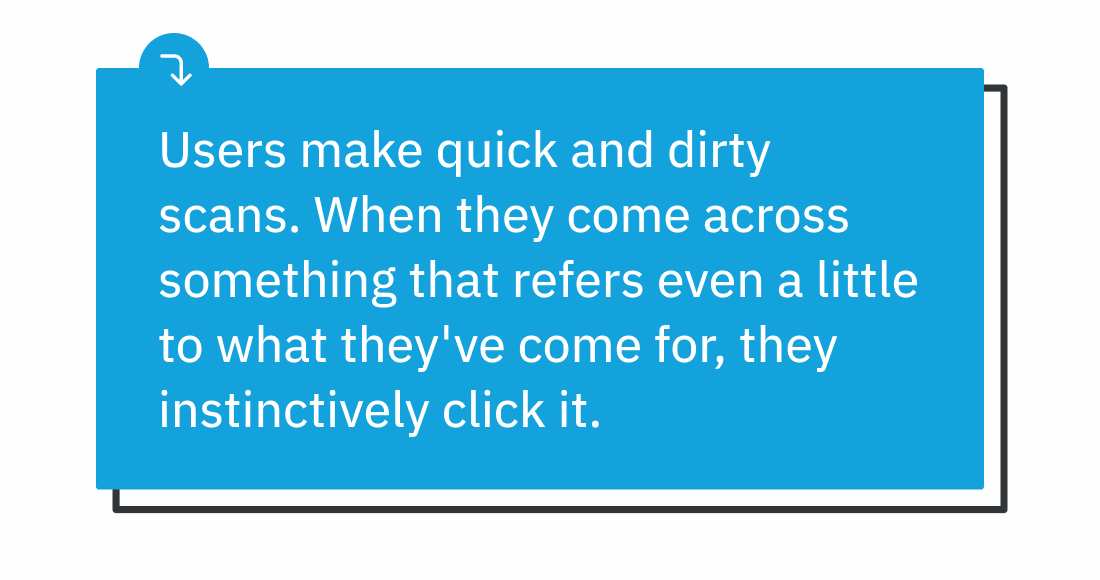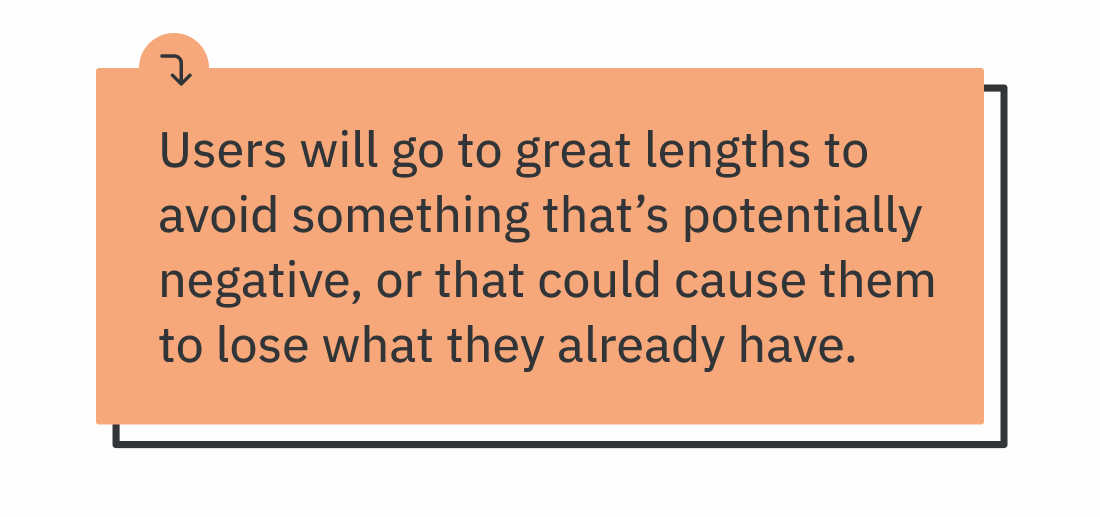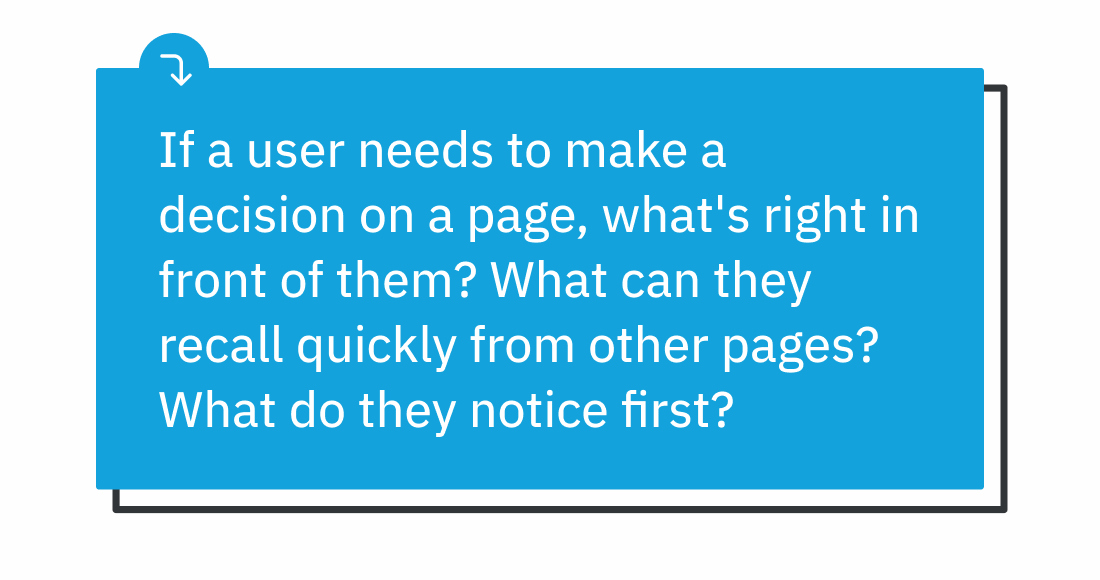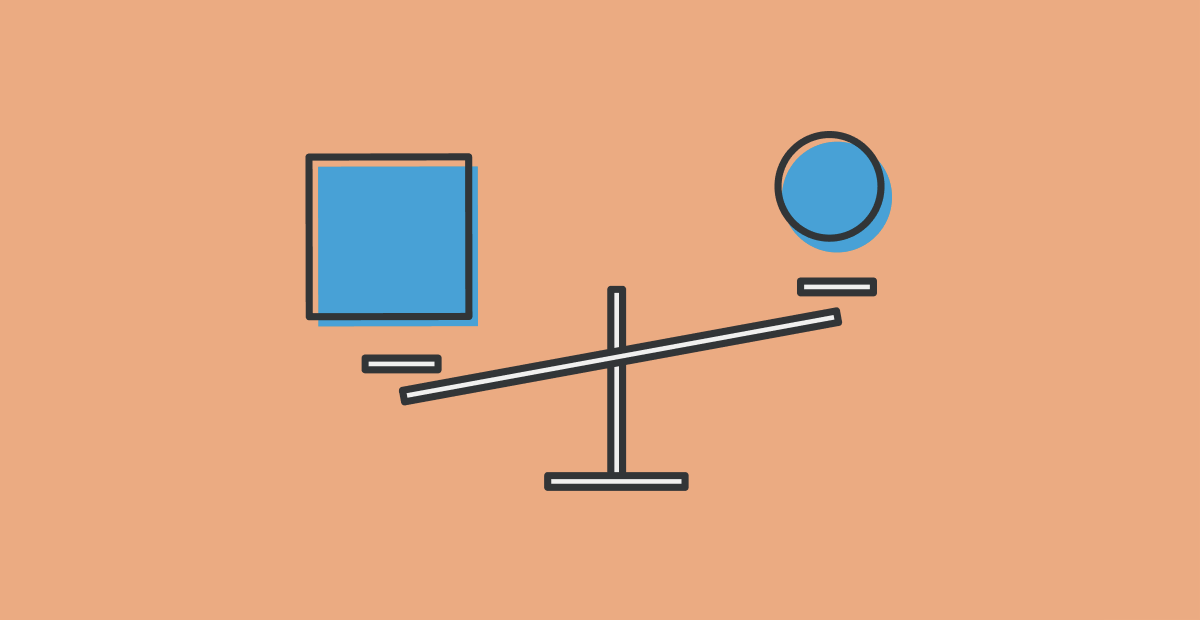We like to apply labels to users: they’re irrational, lazy, unpredictable, rushed, and so on.
To some extent that may be true — we aren’t machines.
But research shows that users actually make decisions based on a set of predictable subconscious patterns.
To create satisfying digital experiences, UX designers should be aware of — and support — these cognitive habits.
Heuristics
Human beings use psychological tactics and biases to get to decisions quickly. These mental shortcuts are called heuristics. We use heuristics in everyday life, but we especially like using them with software.
We don’t follow these patterns out of laziness or because we’re scatter-brained. It’s quite rational to take advantage of heuristics as a user because…
- In the digital world, there’s very little penalty for being wrong. The cost of most errors is close to zero. Guessing wrong on a link and hitting the back button is still more efficient than reading the whole page to find an exact match.
- Carelessly clicking around is more fun because we get a small dopamine rush from each click.Web pages can be complicated.
- We’d rather make a decision and get on with our lives. It’s a matter of trade-offs — a balancing act.
- The web enables us to move quickly from one decision to the next, at a much faster pace than the physical world. So that’s what we do.
Let’s take a look at some of the most common heuristics that users employ.
Satisficing
A combination of the words “satisfy” and “suffice.” It means to settle for the first reasonable option you find, without considering the whole set of possibilities. We don’t look for the right answer — we look for whatever is good enough.

Loss Aversion
Losses loom larger than gains in our minds. It is thought that the pain of losing is about twice as powerful as the pleasure of gaining. We put in more work and take more risks to avoid losses than we do to make gains. Part of Prospect Theory.

Availability
People draw conclusions based on what comes to mind immediately. We give a lot of importance to things that we recall quickly and things we can already see right in front of us.

Decision Fatigue
Making a lot of decisions lowers a person’s ability to make rational ones. It’s also exhausting.

Reference Dependence
Human beings do not have an innate way to determine absolute value. So we assign value by comparing one thing to another. We make judgments in relative rather than absolute terms.
#design #web-design #ux-design #ux #psychology #ux-basics #ui #product
